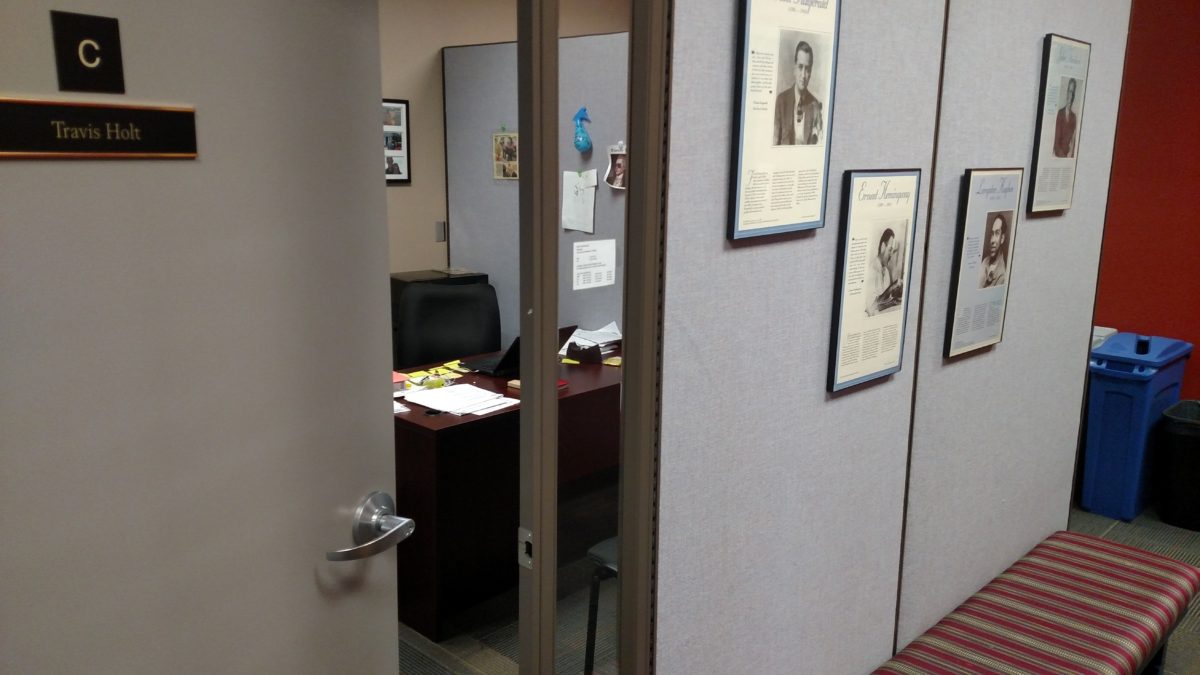While it may be easier to examine Objects of Study in a vacuum-like

scenario, such an approach removes the intricacies of what actually happens in the field. Much of the complexity of research in composition and rhetoric is how closely it is tied with pedagogy, which includes consideration of multiple stakeholders and other components that interact with one another, and Basic Writing is most likely a discipline where this complexity might be greatest. Not only do basic writers have unique experiences they bring to the classroom, but the actual definition of basic writer remains localized to each institution. Scholars cannot just focus student writing without acknowledging what contributes to its formation; identity, access, agency, technology, and demographics are some of the factors that must be examined in connection to other parts of the study.
Some common theories in scholarship that try to account for these complexities are transfer theory and grounded theory. One reason for transfer theory’s current popularity is its perceived effectiveness with social media, a popular object of study in composition. By examining the student writing habits in social media sites and their writing in the classroom setting, scholars look for similarities to see if their success in one area translates to the other. While transfer theory takes on many forms, it takes into consideration the social context that contributes to student identity outside and inside the classroom, and this, initially, leads to a heavier preference for qualitative methods in scholarship. A noticeable trend is scholars using case studies, personal accounts of instructors, interviews, and questionnaires to identify patterns that might inform more quantitative data later (Anson, 2016; Clay-Buck & Tuberville, 2015; Vie, 2015). Moore (2012) noted that for quantitative data, researchers typically follow a small group of students over the course of their degree though a longitudinal study or a much larger group for a more limited amount of time. Because transfer theory focuses on the movement, or transference, of skills from one context to another, or lack thereof (Anson, 2016), scholars appear to prefer the longitudinal studies because the student’s initial performance must be noted and then measured over the course of time.
Grounded research follows a similar pattern of using qualitative data to establish a groundwork for quantitative data later, but the actual theory used to generate knowledge emerges from the qualitative data gathered. Vie (2015) followed this approach when researching views and uses of social media in the classroom. Through qualitative data, she established the benefits and challenges of using social media in the classroom. The purpose was to “assess” the status of this subject in the field amidst “burgeoning interest in social media” (p.41). Yet, this structure of gathering qualitative data in one study with the purpose of it leading to more quantitative studies in a separate or later study is not new.
As Dr. Richards (2016, September 21) noted in an interview, after Kathleen Blakely became editor for CCC in 2011 and made a call for more empirical research in the field, there has been more of a push for quantitative data in connection to qualitative data. MacArthur and Philippako (2013) use several forms of qualitative research through interviews, participant observations, and questionnaires to establish changes in writing curriculum. They then use quantitative statistics to measure student writing quality on tests and writing samples to reflect whether the curriculum changes produced positive results in the quality of student writing. The efforts to replicate data and show consistent patterns and truths help establish the field and discipline in the context of the research university (Richards, 2016, September 21).
And while Yancey’s call for more empirical research has led to the increase in quantitative studies, the need for validation already connected to the history of composition in the university. Originally created at Harvard University as a result of expanding admission to more students from public schools and in an effort to bridge the gap between those institutions and higher education, composition and rhetoric remained limited to general education. It was a core course, but it did not necessarily have the renown of other disciplines in the academic setting. Even substantial work and growth in the field over the next century remained constrained by the lack of replicable quantitative data, or the empirical data, that the rest of academia sought.

It appears composition and rhetoric is still trying to establish and identify itself, moving more towards empirical data to do so, and with no lack of abundance of data sets, the important focus now is the best theories and methods to use in analyzing this information. With so many variables present in the writing classroom, this will be no easy task, but with the ever-shifting preferences of students regarding different social media, is there a particular theory or method that best captures what is happening here? Will transfer theory continue to be a popular choice when examining how students move from one discourse to another, or will there be a new adaptation or new theory altogether that measures this better?
References
Anson, C. M. (2016). The Pop Warner Chronicles: A Case Study in Contextual Adaptation and the Transfer of Writing Ability. College Composition and Communication, 67(4), 518-549. Retrieved from http://ezproxy.liberty.edu/login?url=http://search.proquest.com.ezproxy.liberty.edu/docview/1798722905?accountid=12085
Clay-Buck, H., & Tuberville, B. (2015). Going off the grid: Re-examining technology in the basic writing classroom. Research & Teaching in Developmental Education, 31(2), 20-25. Retrieved from http://ezproxy.liberty.edu/login?url=http://search.proquest.com.ezproxy.liberty.edu/docview/1684790445?accountid=12085
MacArthur, C. A., & Philippakos, Z. A. (2013). Self-Regulated Strategy Instruction in Developmental Writing: A Design Research Project. Community College Review, 41(2), 176-195. http://dx.doi.org.ezproxy.liberty.edu/10.1177/0091552113484580
Moore, J. (2012). Mapping the Questions: The State of Writing-Related Transfer Research. Composition Forum, 26 Retrieved from http://www.eric.ed.gov/contentdelivery/servlet/ERICServlet?accno=EJ985810
Vie, S. (2015). What’s going on?: Challenges and opportunities for social media use in the writing classroom. The Journal of Faculty Development, 29(2), 33-44. Retrieved from http://ezproxy.liberty.edu/login?url=http://search.proquest.com.ezproxy.liberty.edu/docview/1776597451?accountid=12085
